[Beardtongues and Penstemons of the Columbia River
Gorge of Oregon and Washington]
Sand Penstemon, Sand Dune Penstemon, Sharpleaf Penstemon, Sharp-leaved Penstemon
Penstemon acuminatus var. acuminatus
Synonym: Penstemon attenuatus var. hyacinthinus
 -
- 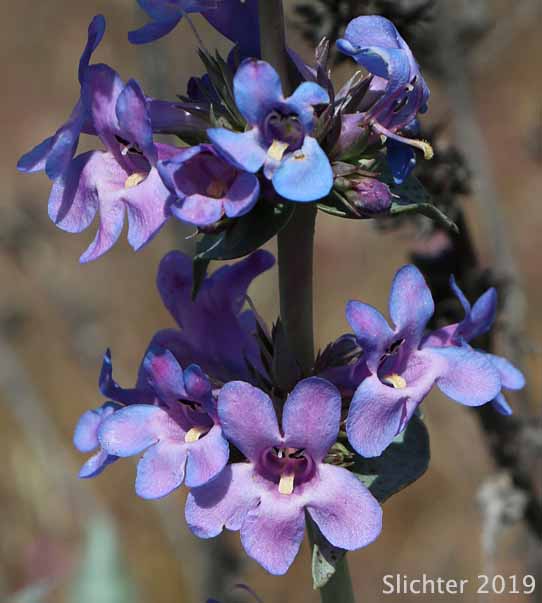
Sand penstemon in bloom along Washington Highway 14 east of Roosevelt, WA.......May 2, 2019.
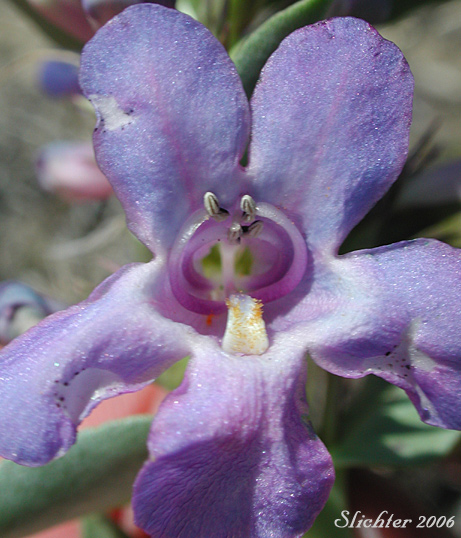 The
photo at right shows a frontal view of the corolla of the flower seen above. Note
how the the flattened staminode reaches the mouth of the flower and extends outwards
slightly across the lower lip. Note also the yellowish hairs on the tip of the
staminode and that the anthers at the central portion of the top of the corolla
tube have yet to open.
The
photo at right shows a frontal view of the corolla of the flower seen above. Note
how the the flattened staminode reaches the mouth of the flower and extends outwards
slightly across the lower lip. Note also the yellowish hairs on the tip of the
staminode and that the anthers at the central portion of the top of the corolla
tube have yet to open.
Characteristics:
Sand penstemon is a short perennial, with thick, firm oblanceolate
leaves. The one to several stems are stout, erect, and range from 15-60 cm tall.
The stems and leaves are both glabrous and glaucous. The thick leathery leaves
are entire. The basal leaves range from 4-15 cm long on stiff petioles. Their
blades are lanceolate or elliptic and the distal ends abruptly tapers to a short,
sharp tip. The stem leaves range from 2-7 cm long and have sessile or clasping
bases. Variety latebracteatus has stem leaves that are often longer than
wide, while variety acuminatus has broadly elliptic stem leaves which
may be shorter than wide.
The inflorescence consists of a vertical series of 3-18 clusters
of flowers, each cluster arising from the leaf axils of the upper stem. The
sepals are lanceolate or ovate in shape, tapering to sharp tips. They have entire
to minutely toothed margins and range from 5-9 mm in length. The corolla ranges
from blue to lavender or pink. The throat is moderately inflated and the corolla
is noticeably 2-lipped with round, flaring lobes. The corolla ranges from 1.2-2
cm in length. The palate is glabrous. The anthers lack hairs and are black outside.
They open totally and are shallowly boat-shaped. The staminode just reaches
the mouth and may be glabrous or more commonly yellow haired at the tip.
Habitat:
Sand Penstemon lives on open, frequently sandy places, often
on sand dunes.
Range:
Sand Penstemon's range is from Grant County, WA in the north
to Klickitat and Walla Walla counties (WA), across the Columbia River into northern
and eastern (Harney County) Oregon, eastward along the Snake River plains of
Idaho (Gooding and Owyhee counties).
Variety latebracteatus is found in central Washington
while variety acuminatus may be found in southeastern Oregon, southwestern
Idaho, and northern Nevada.
In the Columbia River Gorge, it may be found between the elevations
of 200'-600' from east of The Dalles, OR into the far eastern parts of the Gorge.
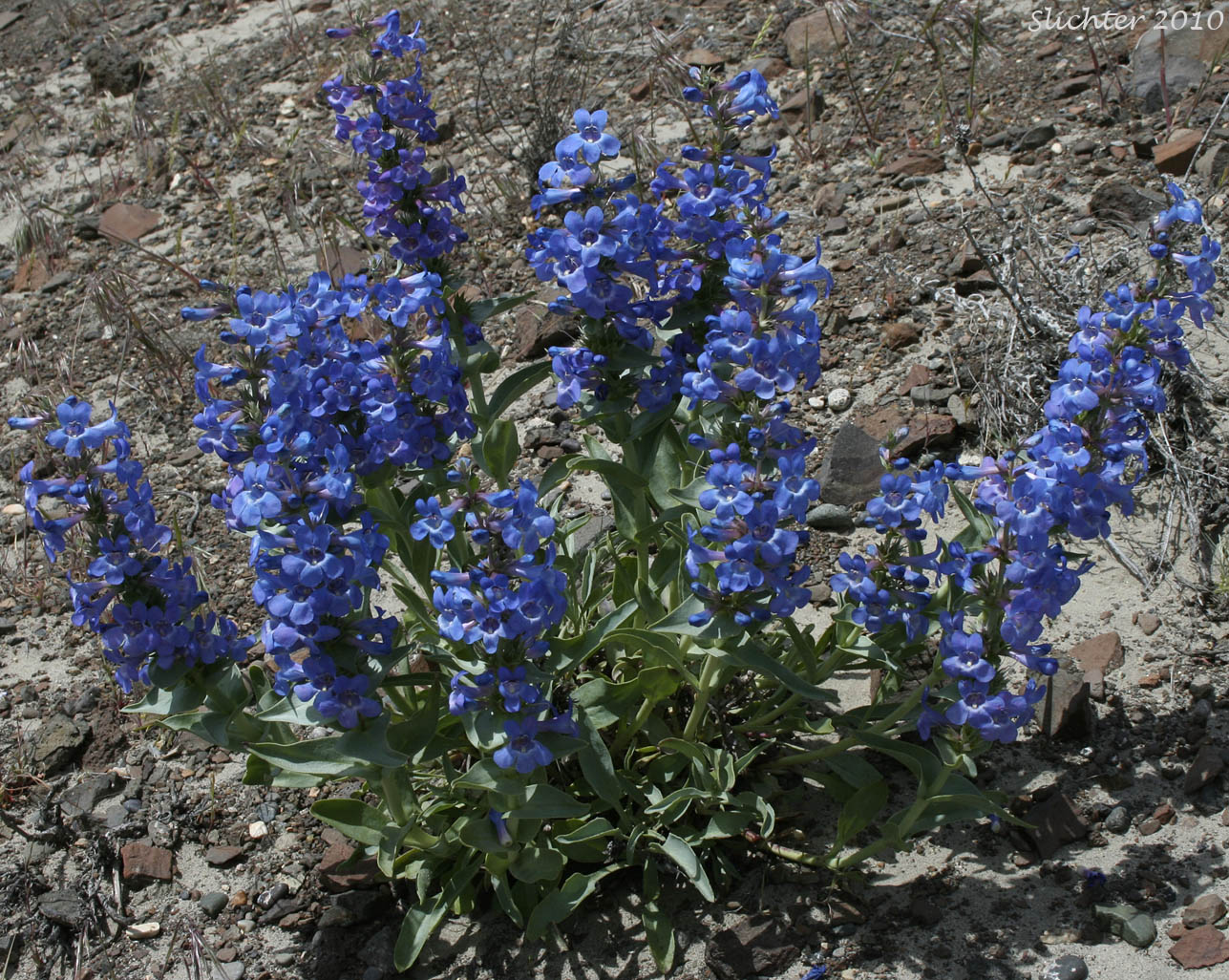
A sand penstemon blooming on sandy, gravelly slopes along Washington Highway SR14 to the west of Rock Creek in Klickitat County..........April 25, 2010.
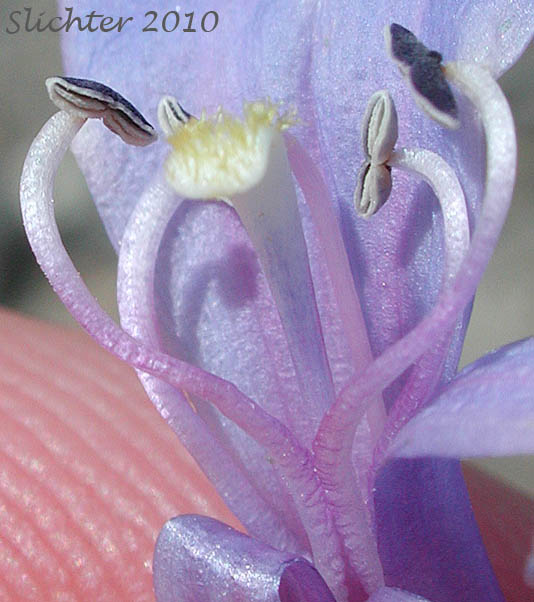 -
- 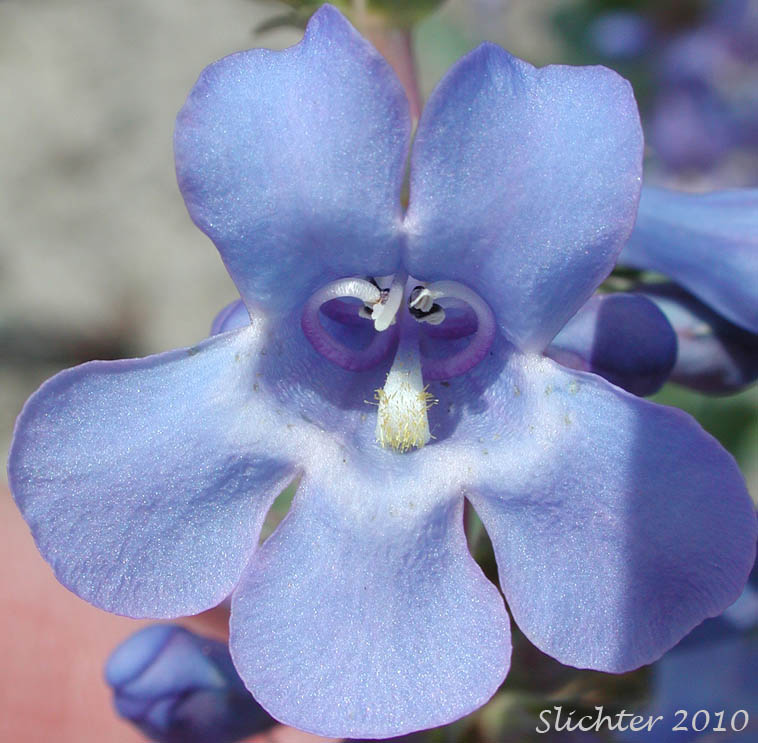 -
- 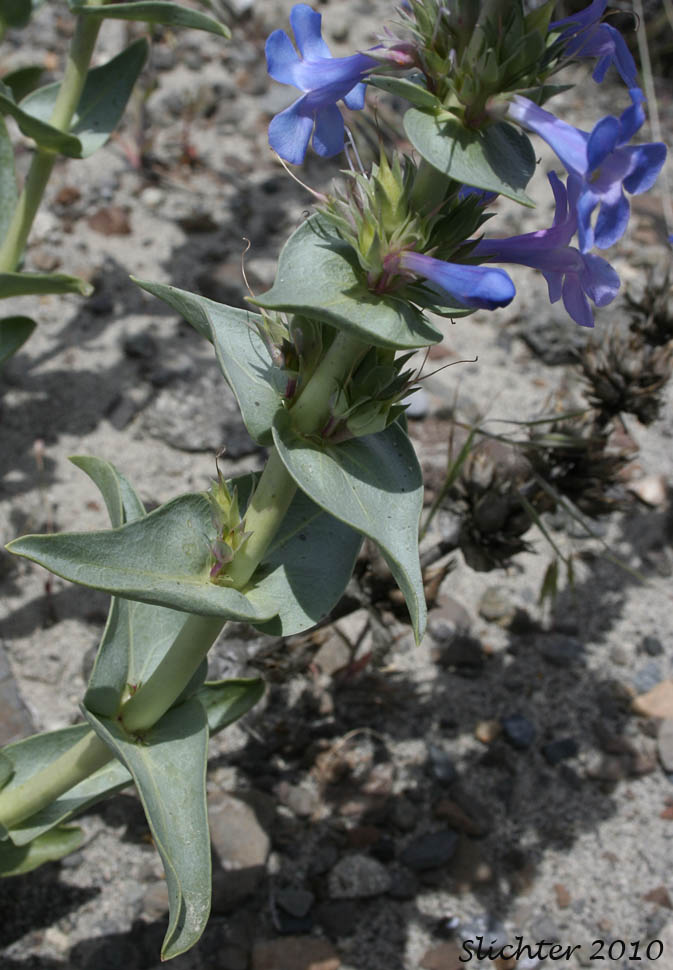
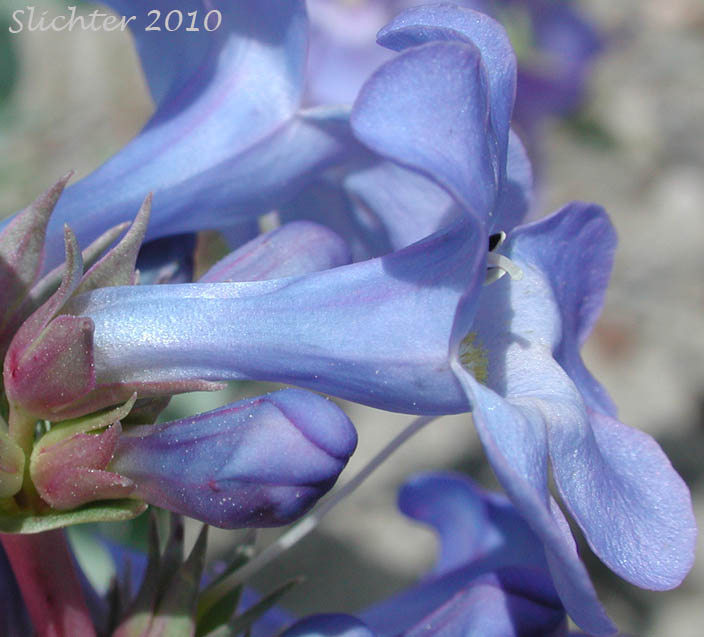 -
-  -
- 
Close-up views of sand penstemons seen on sandy, gravelly slopes along Washington Highway SR14 to the west of Rock Creek in Klickitat County........April 25, 2010.
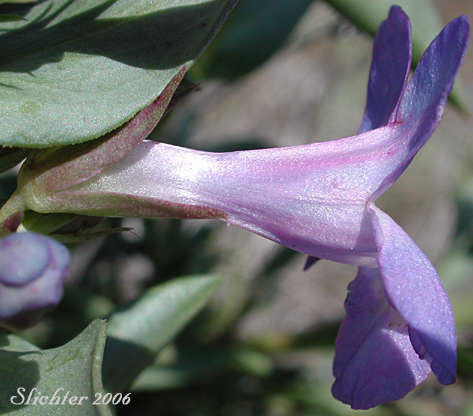
The photo above shows a close-up sideview of the corolla and
calyx of sand penstemon as seen in sand dunes along Washington State Road #14
near milepost 115.6........May 1, 2005. Note the glabrous calyx
and outer surface of the corolla tube.
Paul Slichter
 The
photo at right shows a frontal view of the corolla of the flower seen above. Note
how the the flattened staminode reaches the mouth of the flower and extends outwards
slightly across the lower lip. Note also the yellowish hairs on the tip of the
staminode and that the anthers at the central portion of the top of the corolla
tube have yet to open.
The
photo at right shows a frontal view of the corolla of the flower seen above. Note
how the the flattened staminode reaches the mouth of the flower and extends outwards
slightly across the lower lip. Note also the yellowish hairs on the tip of the
staminode and that the anthers at the central portion of the top of the corolla
tube have yet to open.









